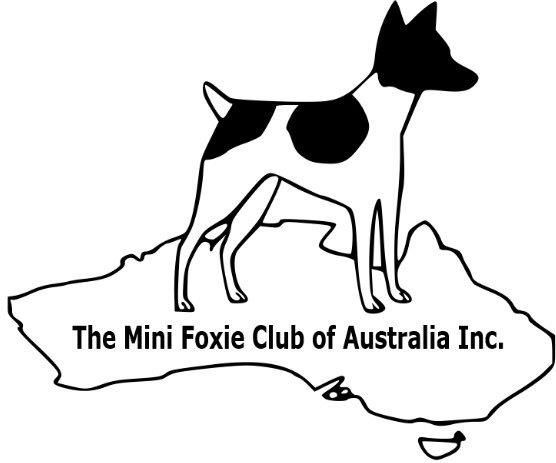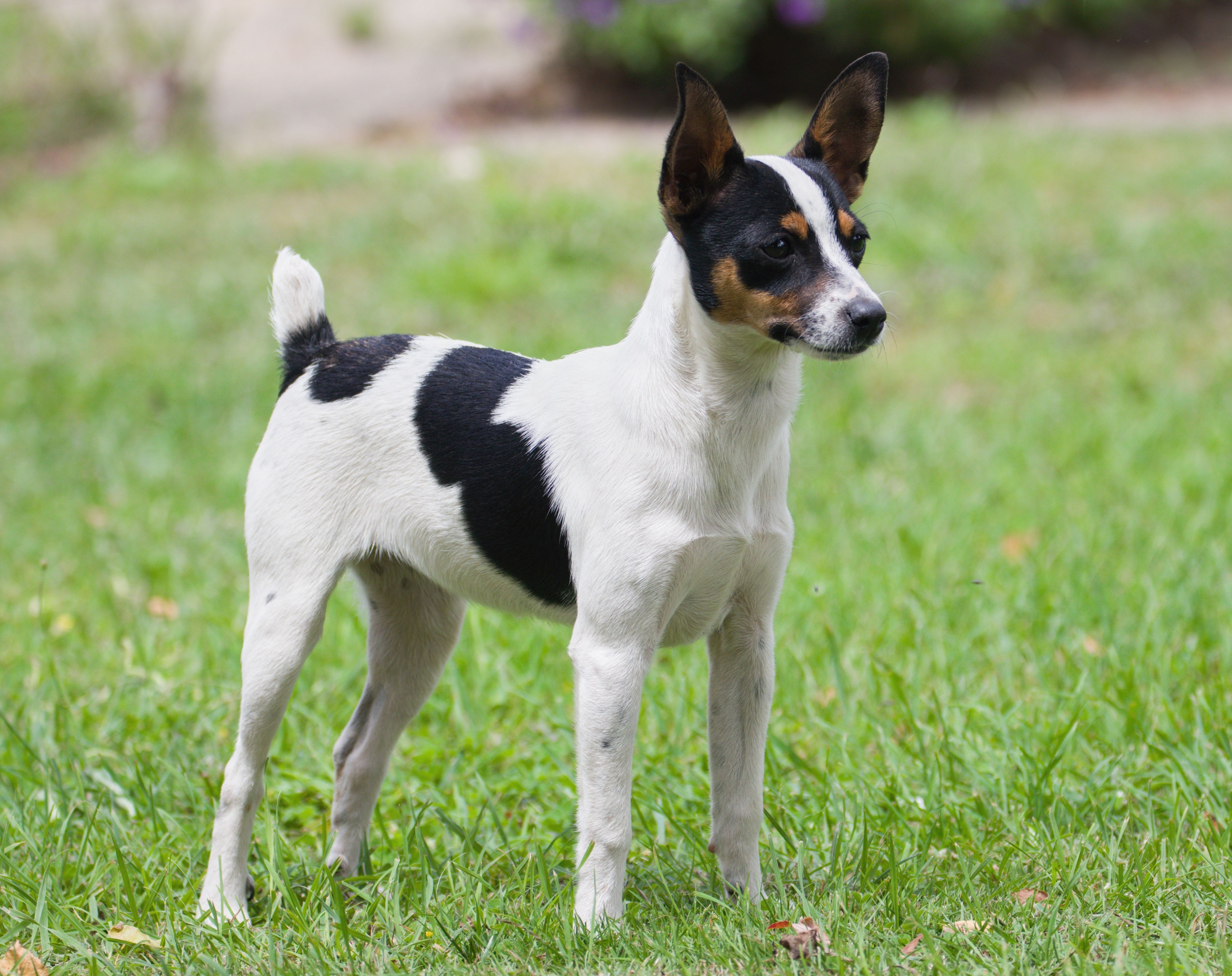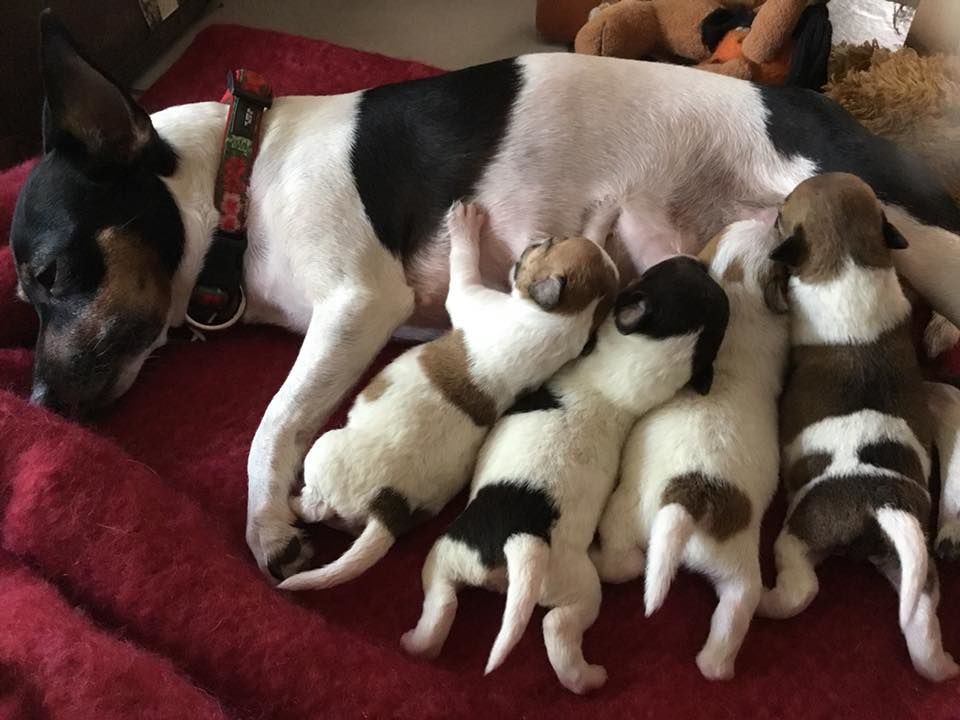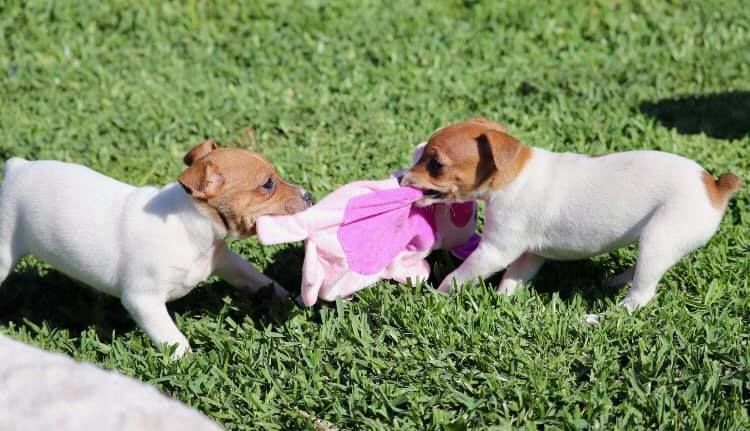Our Breed Standard
|
General Appearance: A small sized, smooth coated terrier - sleek, well balanced and of athletic appearance. Characteristics: Distinctive physical characteristics include a predominantly white coat on the body and a well coloured head. The dog is alert, agile, inquisitive, intelligent and courageous - a swift natural hunter with the ability to spring. Temperament: Fearless and bold, confident and eager to learn, showing loyalty to owners. Adaptable to most domestic situations. Animated, entertaining and playful. Head and Skull: Wedge shaped head, gently sculpted, small in size and in proportion to the body. Skull to be semi-flat, not rounded or apple headed, nor indented. Moderate stop. Cheeks never full. Strong upper and lower jaws. Muzzle to approximately equal the length of the skull, gradually tapering. Lips are black or very dark brown, narrow and tight fitting. Nose must be black. Eyes: Medium sized, oval in shape. Black, or very dark brown, in colour. The area under the eyes should be well filled. Eye rims must be black or very dark brown. Ears: Inverted V shape with pointed tips. Not large; must be in proportion to the head. Carried erect and high on the skull when alert; can be carried back when gaiting at speed. Ear leather is of moderate thickness. Can be softly folded - if folded, the fold is to be above the skull and the tip of the ear must fall forward. Mouth: Strong jaws with a regular scissor bite, i.e. upper incisors closely overlapping the lower incisors and set square to the jaws. Full dentition. Neck: Moderate length. Carried proudly, with confidence. Muscular and strong. Neck slopes elegantly and widens gradually, blending smoothly into the shoulders. Forequarters: Shoulders are sloping and well laid back, fine at points, well defined at the withers and not heavily muscled. Forelegs from any angle must be straight, showing little or no appearance of an ankle at front. Bone in forelegs must be slender but strong. Elbows are midway between the foot and the withers, and are turned neither in nor out. Pasterns are fine and strong, almost vertical. Dewclaws, if present, must be kept trimmed.
| Body: Body tapers slightly from ribs to flank. Back must be straight and strong, with a level topline. Ribs are well sprung. Moderate chest, not protruding, not broad. Depth of chest extends to the level of the elbow. A moderate tuck up of the belly denotes grace and elegance. Hindquarters: Strong and muscular. Croup is gently rounded, not angular. Powerful thighs. Stifles are well bent. Hock joints are strong and angular, providing good support to the lower thighs. Rear pasterns are straight and parallel. Feet: Compact semi-hare shaped foot - oval when viewed from above the foot, or when viewing the pads. Well padded. Feet turn neither in nor out. Toes are arched with the two middle toes extended and close together, completing the oval shape of the foot. Tail: Smooth coated tail, gradually tapering. Tail is moderately set on the croup. Carried at an angle away from the body, not permanently curled or carried over the back. When relaxed, tail is not to extend below the hock. Bobtails can naturally occur and are acceptable. Genitalia: Male animals should have two apparently normal testicles, fully descended into the scrotum when mature. Gait/Movement: Movement is smooth and flowing with good reach and strong drive from the hindquarters. Trot: the topline should remain straight and head held erect while gaiting. Fore and hind legs are carried straight forward and parallel. Elbows move perpendicular to body, working free of the sides, stifles neither turning in nor out, and hocks not close. Hackney gait is not permitted. May exhibit a light springing series of leaps, especially over obstacles, in the chase or at play. Gallop: somewhat reminiscent of a greyhound, legs tend to converge at full pelt. Able to change directions quickly at full speed. Coat: A single coat that is short, dense, glossy and of fine smooth texture. Coat can be slightly longer on ruff of neck. Coat is less dense on belly. Colour: Colour on the body should be predominantly white, with black and/or tan markings. Tan should be a rich, warm shade of tan. No other colours are permitted. Any white colour on the head should not touch the ears or the eyes. Solid coloured markings should not extend beyond the elbow or the hock. Full coloured coats are not permitted. Brindling or merling of colours is not permitted. Overlay of colours is not preferred. Some ticking is permitted but should be minimal. Skin must be highly pigmented in black or tan colours only. Size: Height, upon maturity, to be between 24cm (9.5 inches) and 30.5cm (12 inches). Height of body is measured from the underside of the front feet to the top of shoulders. The height of the body should be equal to the length of the body. Length of body is measured between the highest midpoint of the shoulder blade (the withers) and the highest midpoint of the hip (the haunches). Bone must be substantive but not excessive, and in proportion to the size of the dog. Having a small skeletal frame, weight should be a healthy weight for the height of the dog and not exceed 5.5 kilograms (12 pounds). Faults: Any departure from the foregoing points shall be considered a fault. The seriousness of the fault shall be determined with due regard given to the recognition of the physical features of the breed, and with respect to the health and welfare of the dog.
The Mini Foxie Club of Australia is committed to high ethical standards of registering and protecting the pedigree of The Mini Foxie. We are the only registered Mini Foxie Club in Australia with experience breeders. Frequently asked questions about Mini Foxies. 1. Where do I buy a pure breed Mini Foxie?
2. General Health:
3. Breed Standards:
4. How & who can enter into a dog show?
5. How do I apply for membership?
|




